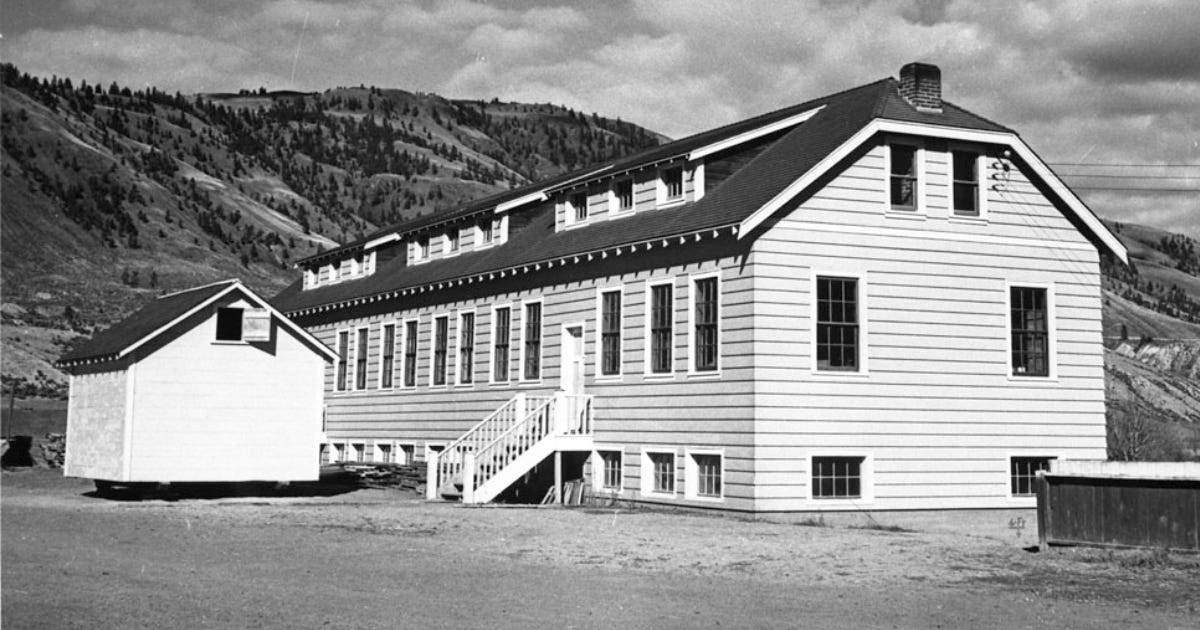First Nation starts radar search for evidence of residential school burials
Another First Nation has launched a ground-penetrating radar search to substantiate claims of human remains purportedly discovered at a former residential school in Fort George, Quebec.
Another First Nation has launched a ground-penetrating radar search to substantiate claims of human remains purportedly discovered at a former residential school in Fort George, Quebec.
The search is underway at the site of the Sainte Thérèse de l’Enfant Jésus school, a Roman Catholic residential school that opened in 1937.
According to the National Centre for Truth and Reconciliation, about 80 children were enrolled in the school in the 1950s, and it became overcrowded by the 1960s.
“In 1971 responsibility for the school (but not the residence, which was renamed the Couture Student Residence) was transferred to a provincial school board. By 1979 the residence had been transferred to a local school authority,” writes the NCTR.
The school closed in 1981, when it was burned and buried as the Village of Fort George moved inland for a Hydro-Quebec dam project on La Grande River.
A Université de Montréal team, led by Adrian Burke, will search the area with former Indigenous students.
“We got together as many old maps, photos and aerial photos, basically trying to reposition and locate where the buildings were,” Burke told CTV News.
The team will scan the area with a radar machine to review any potential anomalies below the surface.
“It has an antenna that sends out an electromagnetic wave that’s similar to a radio, microwave or cell phone,” said Burke. “It’s basically measuring two things. It’s measuring the time that it takes to go down and come back, but also the speed. If the wave goes down through the ground and hits a big rock or a pipe in the ground, that’ll usually bounce back and we can see it.”
However, discovering the remains of a body that may not be in a casket is difficult, noted Burke.
“If there’s no coffin, it’s definitely harder. Usually, you’re hoping to see at least the shaft, and then you have some idea of where the ground was disturbed,” he said.
The searches were first approved by the community in 2022, with the Trudeau government providing $225,655 in funding. However, the government discontinued any further funding for searches of unmarked graves at former residential schools earlier this year.
Millions in funding were allocated after a claim of over 200 children clandestinely buried beneath a former residential school in Kamloops, B.C., in 2021.
The Kamloops ground-penetrating radar initiative led other former residential school sites to conduct excavations, expecting to find secretly buried human remains.
In August 2021, researchers in Shubenacadie, N.S., excavated the former Shubenacadie Residential School for remains but found no conclusive evidence.
In October 2021, an excavation for unmarked graves was conducted at the former Camsell Hospital in Edmonton. The hospital treated Indigenous people with tuberculosis, and some believed the dig would uncover buried patients; however, no such evidence was found.
In August 2023, a four-week excavation was conducted in a church basement in Pine Creek, Man., formerly part of a residential school run by the Catholic Church from 1890 to 1969.
Minegoziibe Anishinabe, a First Nations tribe northwest of Winnipeg, hired archaeologists to dig up the church basement after ground-penetrating radar detected 14 anomalies in the soil.
However, no human remains were found.
Areport from the Angus Reid Institute in August found that 63 per cent of Canadians and 56 per cent of Indigenous people now “hold the view that further evidence through exhumation is necessary to accept that the remains of children are buried at the site.”





Radar searches show ground anomalies; not graves. If anomalies are discovered, investigate them! Do not immediately assume they are bodies! Please!
Another tribe looking to cash in on the scam. What took so long.